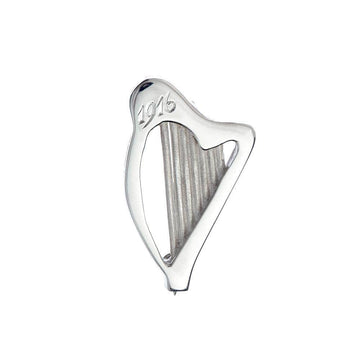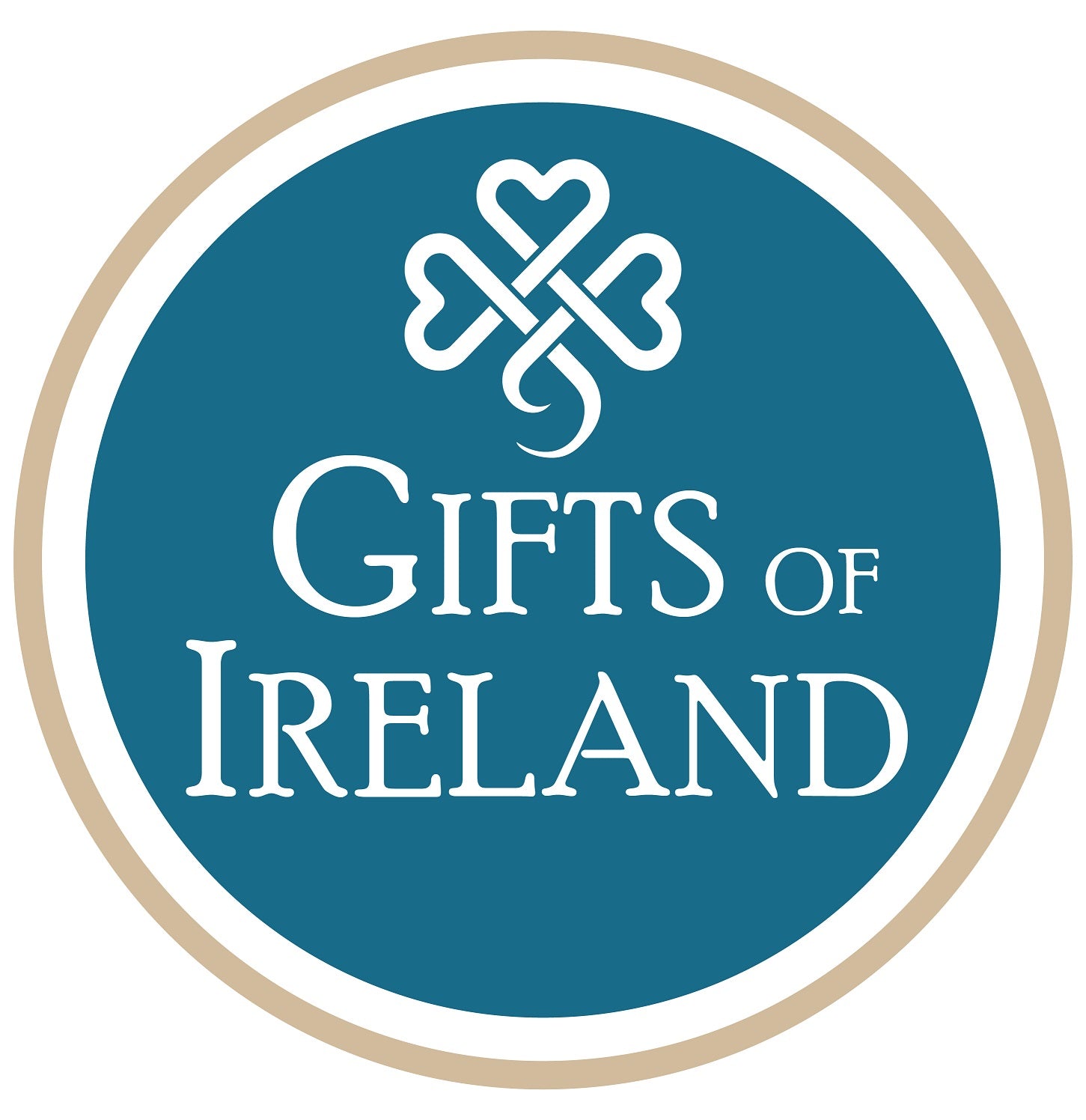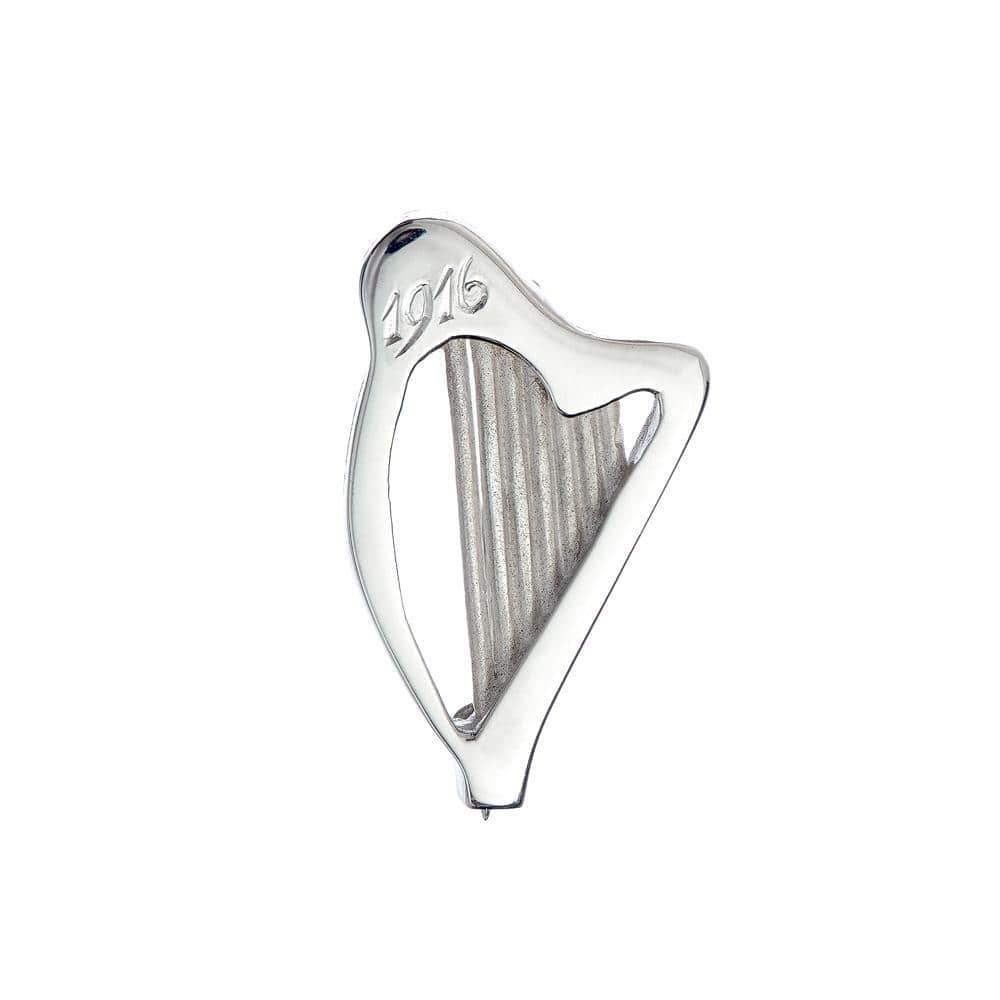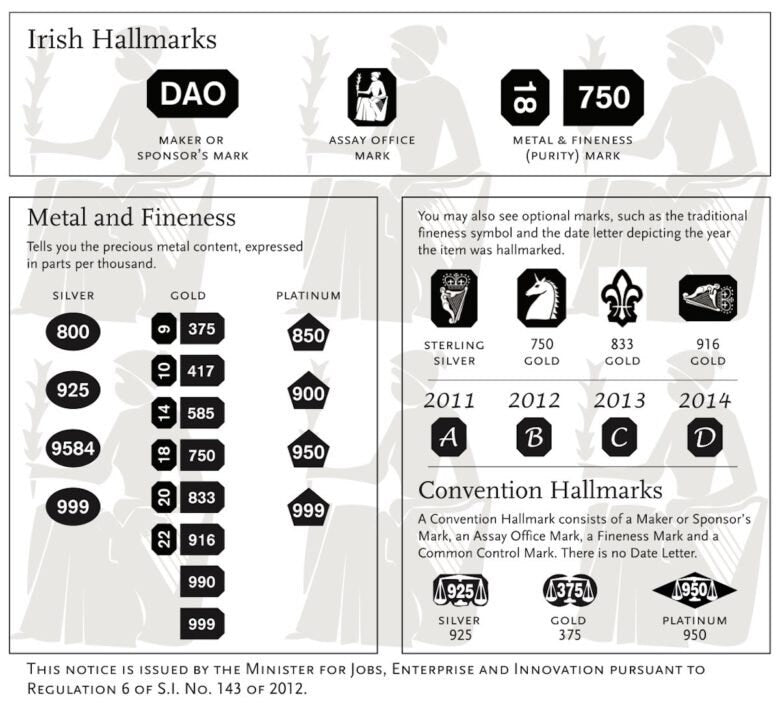About this piece
Handmade 925 Solid Sterling Silver 1916 harp brooch with 46cm chain and lobster clasp.
Length 22mm, Width 16mm, Depth 3mm
Originally commissioned for the 1916 GPO Witness History Exhibition.
Ireland is unique in having a musical instrument as its emblem. One of the oldest instruments in traditional Irish music dating back to medieval times. It is a triangular wooden framed wire or gut stringed instrument plucked by the fingers nails.
In the words of Giraldus Cambrensis, the twelfth century Welsh scholar, describing the musicianship of the harper “...the perfection of their art seems to lie in their concealing it, as if it were the better for being hidden.”
History of the 1916 Rising
The Easter Rising was an Irish rebellion against British occupation, fought over six days in April 1916. Members of the Irish Volunteers and the Irish Citizen Army launched a surprise takeover of multiple key locations, mostly in Dublin city, and publicly announced an independent Irish republic. Most famously, they took over the General Post Office (GPO) which has since become an icon of the rebellion. The British response was brutal, using heavy artillery and even a gunship to defeat the besieged rebels, destroying much of the city in the process. Eventually the rebels were forced to surrender.
Though militarily the uprising was a failure, the severe British response - a city in ruins, hundreds dead, rebel prisoners executed - helped to change the Irish public's mind towards their relationship with Britain, igniting further independence movements - both peaceful and more radical. The 1916 uprising is now (though not without controversy), recognized as a key step towards eventual Irish sovereignty.
History of the Celtic Harp
The cláirseach, or harp, is the national emblem of Ireland, appearing on flags, passports, and currency. It was an instrument of the elite in Ireland and Scotland, requiring years of practice to master, with strings made of metal that had to be constantly dampened due to their long resonance. Though it may have existed as far back as the 11th Century, its position as a symbol of Ireland and Celtic culture earned it the enmity of the English authorities in the late medieval period, who eventually banned it entirely - only a handful of harps from before this period have survived to this day. However in recent years the harp has had a cultural revival (with new musicians typically favoring small models), both as an instrument and as a symbol of Irish identity.







